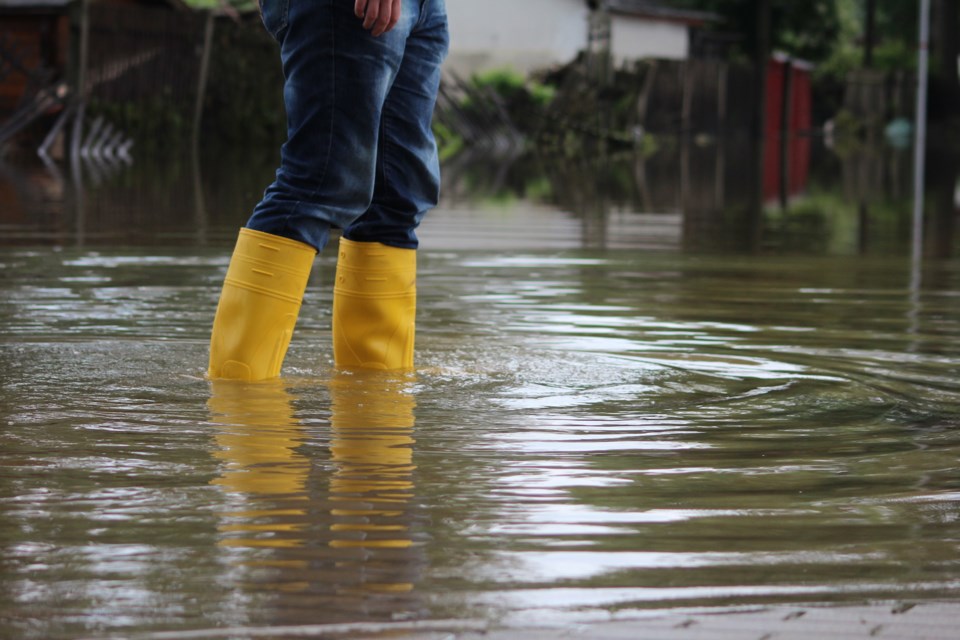SIOUX LOOKOUT – After months of battling back the rising floodwaters, the Sioux Lookout community can take a second to breathe a sigh of relief before taking on the task of clearing up the aftermath.
At the present moment, the municipality reports that the costs of flood mitigation for this spring have already surpassed the $200,000 mark and will continue to rise as clean-up efforts begin and options for permanent infrastructure changes, such as raising road surfaces, are planned and implemented.
Municipal Clerk, Brian P. MacKinnon, says, “there is a lot of work to be done around Sioux Lookout. A number of Municipal properties have been covered in debris, much like our waterfront businesses and residents.” MacKinnon adds, “We are taking several steps to work with the community to minimize the costs of cleaning up the debris.”
In addition to the waterfront properties, municipal staff will be concentrating their clean-up effort on properties such as parks, trails, boat launches, and other areas.
As for the tens of thousands of sandbags around the community. If residents and businesses want them taken off their properties, residents and businesses wishing will also need to register with Public Works. Pallets of sandbags to be picked up must be properly stacked and left near the edge of the road or driveway, where they are easily accessible by forklift.
Furthermore, the municipal office is waiving tipping fees to dispose of flood-related waste at the landfill for those who register. Flood-affected residents and businesses can register to have these fees waived at https://webforms.siouxlookout.ca/flood/Tipping-Fee-Waiver-and-Sandbag-Collection, by calling Public Works at 737-1234, or emailing [email protected] with your name, address, phone number, and email address.
However, for those who have seen railway ties wash up onto their properties, they can be brought to a designated storage location at the landfill at no cost, but can NOT be mixed in with other waste for disposal.
Staff at the landfill will have this list available to waive tipping fees for affected properties. Landfill hours are Tuesday and Wednesday from 10:00 a.m. to 5:00 p.m., Fridays from 10:00 a.m. to 8:00 p.m., and Saturdays from 8:00 a.m. to 5:00 p.m.
The municipality also reminds residents that there are several health concerns when dealing with flood waters that have infiltrated properties.
Groundwater could have potentially contaminated wells and drinking water from lakes, septic fields and tank issues or failures.
The Northwest Health Unit recommends shocking well water with chlorine to get rid of any bacteria before residents resume drinking it.
Additionally, The health unit also has to offer drinking water sampling which Individuals can purchase for a small shipping fee of $2.00. The resident will submit a sample from the well water to the public health lab and they will inform you if bacteria such as pollutants like e-coli, giardia, and cryptosporidium parasites are festering in the drinking water.
Mould growth is also another common issue to keep an eye on. Mould can grow in pools of stagnant water in or under buildings.
Mould can be cleaned by most household chemicals, but the public should be cautious as mould spores will become airborne when disturbed. Wear gloves and a mask when cleaning up mould. If the mould is persistent or in a large area of the property, it is advised to seek a professional cleaning service or residents might have to remove the section of mould from the property entirely.
For more information on these topics, please visit the Northwestern Health Unit page on potential health risks related to floods at https://www2.nwhu.on.ca/news/potential-health-risks-related-to-floods/.
“This is just the beginning of a long clean-up process,” explained MacKinnon. “Lake levels are still far above normal levels, and it may still be many weeks before the extent of all damages can truly be assessed. But we are getting started, and are eager to assist the community.”
